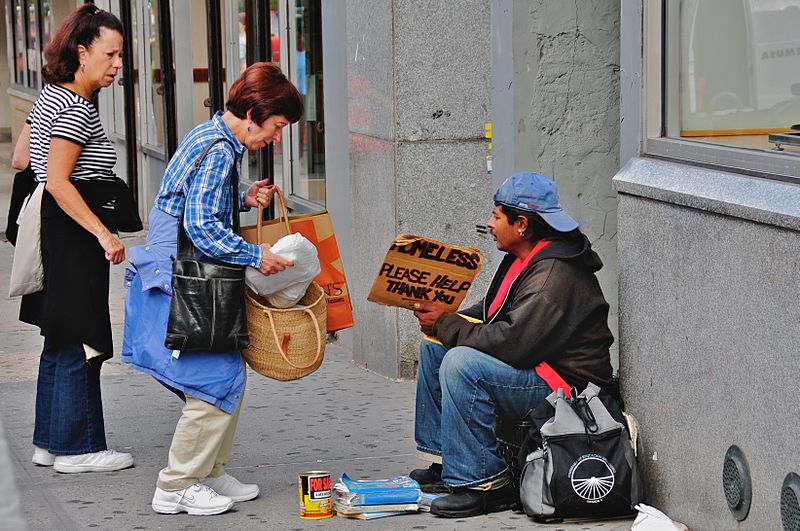
Media can affect our behavior. A classic example is demonstrated in Bandura's bobo doll experiment entitled “Transmission of Aggression Through Imitation of Aggressive Models” (Bandura, Ross, & Ross, 1961). In their experiment, children watched either an adult playing aggressively or non-aggressively to a bobo doll; control group had no exposure at all. It was revealed in their study that children exposed in aggressive behaviors had a significant imitative and non-imitative aggressive behavior.
Music as a medium to affect behavior was also studied by researchers. A great avenue to transmit messages to a vast audience, music can be used to promote values and norms, to evoke emotions, and to influence others through lyrics and melodies.
Extensive research has been conducted on the potentially harmful effects of listening to aggressive music. In several studies (Fischer & Greitemeyer, 2006; Anderson et.al, 2006), it yielded the same result as the bobo doll experiment - that listening to songs with violent lyrics can increase aggressive behavior.

Over the last five decades, studies were mostly focused on the negative effects of violent and aggressive media. It was a widely accepted conclusion that violent and aggressive media can increase a violent and aggressive behavior (Anderson, Gentile, & Buckley, 2007). The positive effects of media, however, was less researched on.
General Learning Model (GLM) created by Buckley and Anderson (2006) is said to be the basis for the underlying effects of music on prosocial behavior Greitemeyer (2009a). GLM is theoretically based on Anderson & Bushman (2002) General Aggression Model (GAM). According to GLM, through learning, any stimulus can have short-and-long term effects. As GLM is based on GAM, it also "describes a continuous cycle between the individual and the environment, and suggests that aggressive contents of violent media may affect a person’s internal state by altering their cognition, affect or arousal." These variable influence an individual's perception of the situation, which in turn had an impact on the person's decision-making processes in a social encounter. Applying the General Learning Model, a positive behavior may be activated if the media input is positive.

Research studies testing if General Learning Model is indeed effective in activating positive behavior, various media is tested on prosocial behavior. Prosocial behavior referred to as voluntary actions of an individual that are intended to help or benefit other people (Eisenberg and Fabes and Spinrad, 2006). Practices of prosocial behavior may be exhibited through different activities like sharing, comforting, rescuing and helping (Batson, 1998). Emotion and feelings is an indirect motivator of prosocial behavior. According to Lockwood (2014), empathy or a person’s ability to understand and connect to the experience of others is a motivating factor for prosocial behavior.

In a recent research study, Kennedy (2012) aimed to test if prosocial music can increase prosocial behavior. Participants were evenly and randomly assigned to each of prosocial or neutral condition. Under prosocial condition, participants had to listen to ‘I’ll be there for you’ (Crane et al., 1995), ‘Count on me’ (Mars, Lawrence, & Levine, 2010) ‘Lean on me’ (Withers, 1987), and ‘Imagine’ (Lennon, 1971), whereas in the neutral condition, the songs were ‘Who are you’ (Townshend, 1978), ‘The lazy song’ (K’Naan & Thomas, 2010) ‘Gold digger’ (West, Charles, & Richard, 2005), and ‘Billie Jean’ (Jackson, 1983). After listening to either set of songs, the experimenter will accidentally knock over a container of 20 pens. As a measure of the participants' prosocial behavior, the number of pens that the participants picked up was recorded. Then, Positive Affect and Negative Affect Schedule (Watson, Clark, & Tellegen, 1988), or PANAS, a 5-point Likert scale, was answered by the participants. PANAS was used to measure affect.
It was found that participants under prosocial condition picked up significantly more pens than those of under neutral condition. Affect was similar on both prosocial and neutral condition, suggesting that tempo and melody influence mood rather than lyrics.
References:
Anderson, C. A., Carnagey, N. L., & Eubanks, J. (2003). Exposure to violent media: The effects of songs with violent lyrics on aggressive thoughts and feelings. Journal of Personality and Social Psychology, 84, 960 –971. http://dx.doi.org/10.1037/0022-3514.84.5.960
Bandura, A., Ross, D., & Ross, S. A. (1961). Transmission of aggression through imitation of aggressive models. Journal of Abnormal and Social Psychology, 63, 575-582.
Batson, Daniel C. (1998). Altruism and Prosocial Behavior. The Handbook of Social Psychology, 4th ed., edited by Daniel T. Gilbert, Susan T. Fiske, and Gardner Lindzey. New York: Oxford University Press, ISBN: 0195213769.
Anderson, C. A., & Bushman, B. J. (2002). Human aggression. Annual Review of Psychology, 53, 27–51. http://dx.doi.org/10.1146/annurev .psych.53.100901.135231
Buckley, K. E., & Anderson, C. A. (2006). A theoretical model of the effects and consequences of playing video games. In P. Vorderer & J. Bryant (Eds.), Playing video games: Motives, responses, and consequences (pp. 363–378). Mahwah, NJ: Erlbaum
Eisenberg, Nancy (Ed); Damon, William (Ed); Lerner, Richard M. (Ed). (2006). Handbook of child psychology: Social, emotional, and personality development, Vol. 3, 6th ed., , (pp. 646-718). Hoboken, NJ, US: John Wiley & Sons Inc, xxiv, 1128 pp.Fischer, P., & Greitemeyer, T. (2006). Music and aggression: The impact of sexual-aggressive song lyrics on aggression-related thoughts, emotions, and behavior toward the same and the opposite sex. Personality and Social Psychology Bulletin, 32, 1165–1176. http://dx.doi.org/10 .1177/0146167206288670
Greitemeyer, T. (2009a). Effects of songs with prosocial lyrics on prosocial thoughts, affect, and behavior. Journal of Experimental Social Psychology, 45, 186 –190. http://dx.doi.org/10.1016/j.jesp.2008.08.003
Kennedy, P. (2013). The Relationship Between Prosocial Music and Helping Behaviour and its Mediators: An Irish College Sample. Journal Of European Psychology Students, 4(1), 1. http://dx.doi.org/10.5334/jeps.av
Lockwood, P. L., Seara-Cardoso, A., & Viding, E. (2014). Emotion Regulation Moderates the Association between Empathy and Prosocial Behavior. Plos ONE, 9(5), 1-6. doi:10.1371/journal.pone.0096555

No comments:
Post a Comment